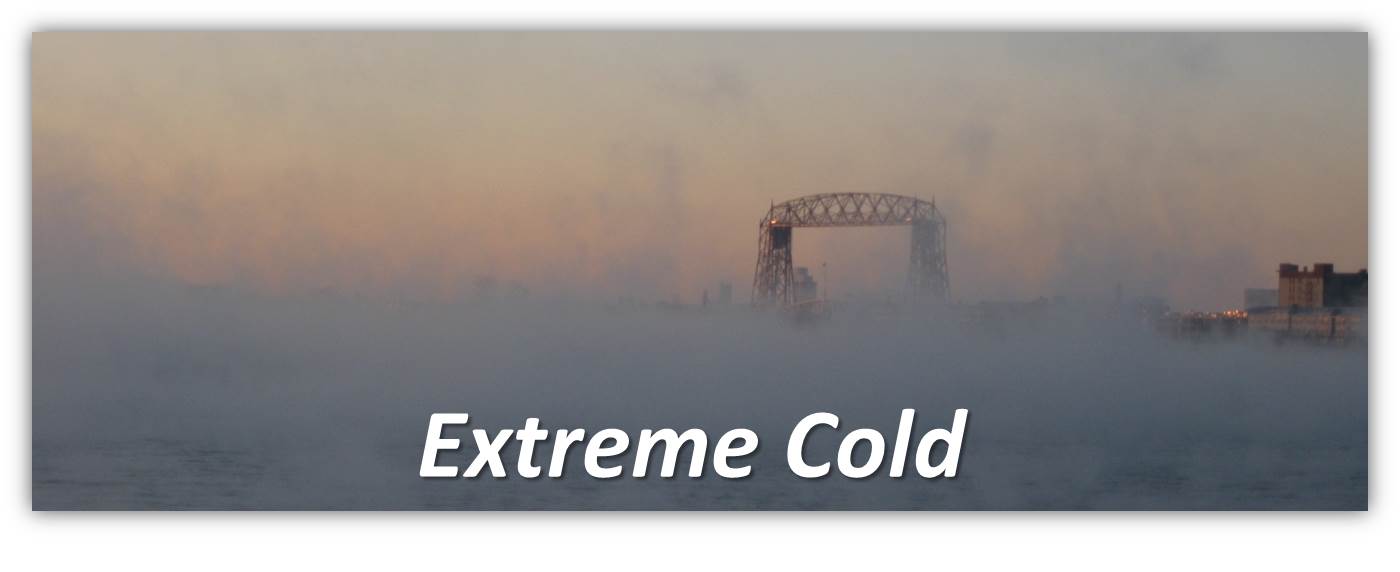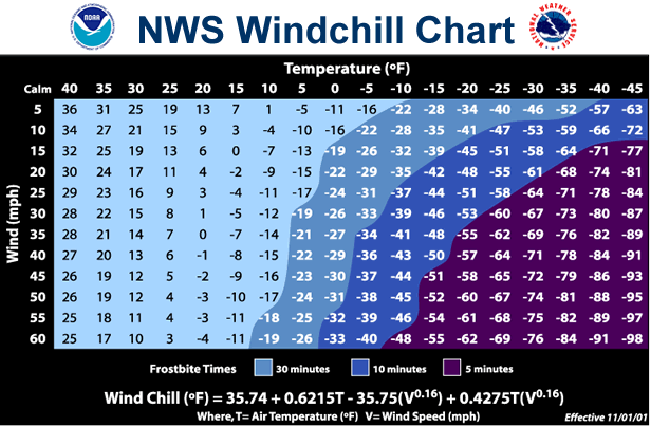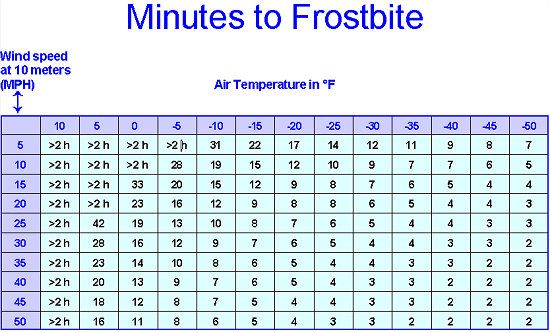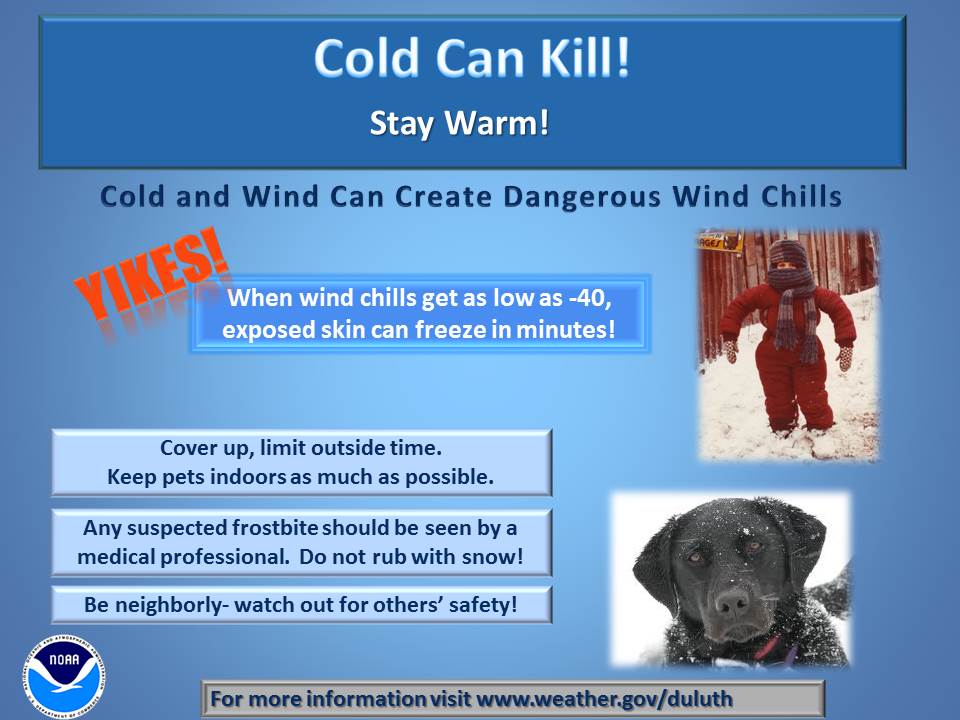
Exposure to cold can cause frostbite or hypothermia and become life-threatening. Infants and elderly people are most susceptible. What constitutes extreme cold varies in different parts of the country. In the southern U. S., near freezing temperatures are considered extreme cold. Freezing temperatures can cause severe damage to citrus fruit crops and other vegetation. Pipes may freeze and burst in homes that are poorly insulated or without heat. Here in the north, extreme cold means temperatures well below zero.
Wind Chill is the term used to describe the rate of heat loss on the human body resulting from the combined effect of low temperature and wind. As winds increase, heat is carried away from the body at a faster rate, driving down both the skin temperature and eventually the internal body temperature. Animals are also affected by wind chill; however, cars, plants and other objects are not.
Use the wind chill chart below to check wind chill based on the wind and temperature. The shaded areas show how long it will take for exposed skin become frostbitten. The bottom chart will give you frostbite times based on the wind speed and temperature. You can click on either chart for a larger view.
 |
 |
Frostbite is damage to body tissue caused by extreme cold. A wind chill of -20° Fahrenheit (F) will cause frostbite in just 30 minutes. Frostbite causes a loss of feeling and a white or pale appearance in extremities, such as fingers, toes, ear lobes or the tip of the nose. If symptoms are detected, get medical help immediately! If you must wait for help, slowly rewarm affected areas. However, if the person is also showing signs of hypothermia, warm the body core before the extremities.
Hypothermia is a condition brought on when the body temperature drops to less than 95°F. It can kill. For those who survive, there are likely to be lasting kidney, liver and pancreas problems. Warning signs include uncontrollable shivering, memory loss, disorientation, incoherence, slurred speech, drowsiness and apparent exhaustion. Take the person’s temperature. If below 95°F, seek medical care immediately!
If medical care is not available, warm the person slowly, starting with the body core. Warming the arms and legs first drives cold blood toward the heart and can lead to heart failure. If necessary, use your body heat to help. Get the person into dry clothing and wrap in a warm blanket covering the head and neck. Do not give the person alcohol, drugs, coffee or any hot beverage or food. Warm broth is the first food to offer. Click this link for more information: https://www.cdc.gov/disasters/winter/staysafe/hypothermia.html

Dress For The Cold:
Wear layers of loose-fitting and lightweight clothing. Trapped air between the layers will insulate you.
